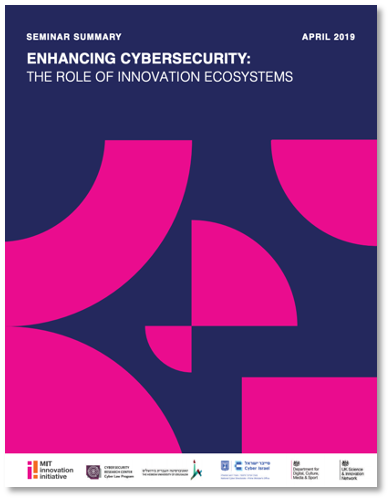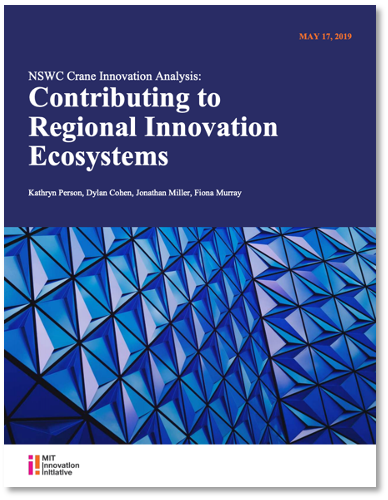RESEARCH & PUBLICATIONS
Find research papers on the MIT iEcosystem model, an assessment of NSWC Crane through the lens of the iEcosystem model, a summary of our cybersecurity conference and more here.
BEYOND LITHIUM: ACCELERATING NON-LITHIUM LONG DURATION ENERGY STORAGE IN THE US AND DOD
Energy is power. The energy transition and rise of renewable energy will not invalidate this basic premise. However, these changes have the potential to redraw the geopolitical map and change the global power dynamics. America’s proactive efforts to ensure it remains a leader through the energy transition will be critical to its ability to project power and achieve its foreign policy goals. With the threat of disruptions to energy supply from both climate change and nefarious actors increasing, ensuring energy security is key to sustaining Department of Defense (DoD) operations at home and abroad, especially in potential future contested logistics environments. When coupled with local distributed generation, energy storage can play a crucial role in promoting a more resilient DoD.
EVALUATING DATA AUGMENTATION WITH ATTENTION MASKS FOR CONTEXT AWARE TRANSFORMATIONS
Transfer learning from large, pre-trained models and data augmentation are arguably the two most widespread solutions to the problem of data scarcity. However, both methods suffer from limitations that prevent more optimal solutions to natural language processing tasks. We consider that transfer learning benefits from fine-tuning on increased target dataset size, and that data augmentation benefits from applying transformations in a selective, rather than random, manner. Thus, this work evaluates a new augmentation paradigm that uses the attention masks of pre-trained transformers to more effectively apply text transformations in high-importance locations, creating augmentations which can be used for further finetuning.
BENCHMARKING LOW VOLUME / HIGH RISK ELECTIVE SURGERY PROCEDURES TO IMPROVE SURGICAL OUTCOMES AND IMPROVE READINESS USING MACHINE-LEARNING ALGORITHMS
This report explores the context of benchmarking in US healthcare and the incentives for quality improvement, largely from the perspective of financial incentives provided by the Centers for Medicare and Medicaid (CMS), to analyze which fields of medicine are likely most suitable for AI-based benchmarking methodologies, as deployed by Alexandria Health. The report focuses on fields of medicine that have an existing national registry with some form of risk adjustment, identifying eight that meet this criteria. It then calculates a financial value at stake for quality improvement in each of these fields as a proxy for which medical fields may have the greatest incentives to improve their benchmarking methodologies. Based on this analysis, the report found that surgical fields are most likely to be suited to an AI-based approach to benchmarking.
SOLICITATION BEST PRACTICES, GUIDE, AND CHECKLIST FOR FEDERAL AGENCIES
In collaboration with Federal Foundry, MIT’s Mission Innovation X has found a number of practices DoD should adopt to address the (real or perceived) issues with solicitations. Our research involved analysis of over 100 Defense Advanced Research Projects Agency (DARPA) solicitations using natural language processing (NLP), review of existing literature on solicitation and technical document development and interviews with performers who have pursued contracts across DoD.

ENHANCING CYBERSECURITY: THE ROLE OF INNOVATION ECOSYSTEMS
A summary of the conversations from the Enhancing Cybersecurity – The Role of Innovation Ecosystems seminar that took place on February 13, 2019. The goal of the seminar was to advance participants’ knowledge of innovation ecosystems for innovation in cybersecurity. Its approach was to emphasize the growing agglomeration of innovation-driven enterprises creating innovative solutions, and the tightly-coupled interdependencies in these hubs of entrepreneurs, governments, risk-capital, universities and large corporations.

NSWC CRANE INNOVATION ANALYSIS:
CONTRIBUTING TO REGIONAL INNOVATION ECOSYSTEMS
The Naval Surface Warfare Center, Crane Division, (NSWC Crane) is successfully responding to the needs of the Department of Defense and serves as a catalyst for regional industrial development. Its ability to achieve this dual national and regional mission is an example for other defense laboratories in the wider Defense Laboratory Enterprise.

Defense Innovation Report:
Applying MIT’s Innovation Ecosystem & Stakeholder Approach to Innovation in Defense on a Country-by-Country Basis
Government actors in the innovation space play a range of roles: these are in large part determined by the dynamics of each nation’s state ‘system’ of agencies, the wider ‘ecosystem’ in which they operate and their specific organizational mandate. Some agencies play more than one role at the same time, and many operate at different stages of the innovation lifecycle.
